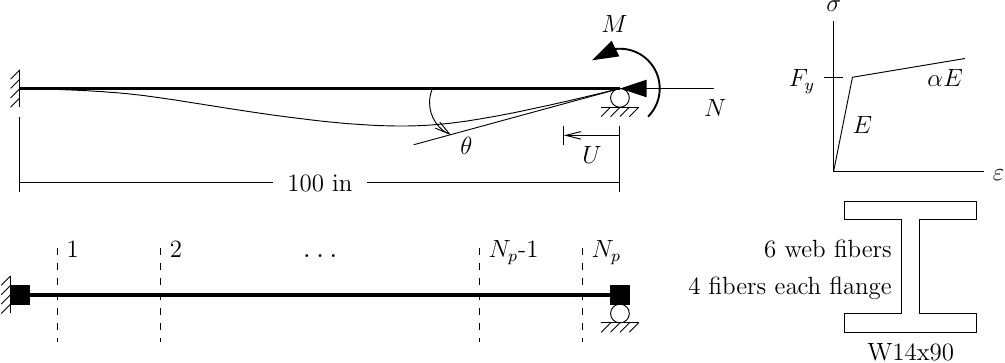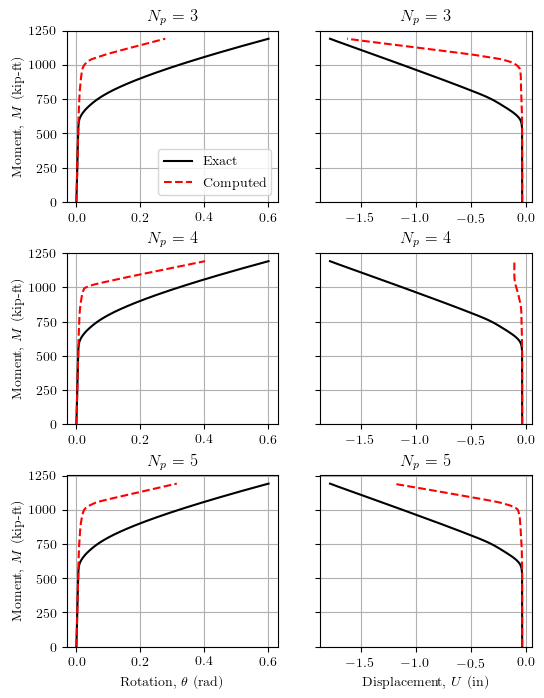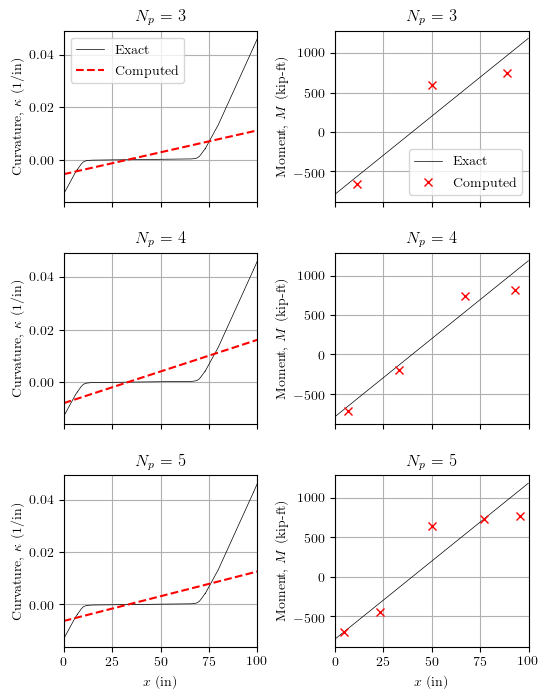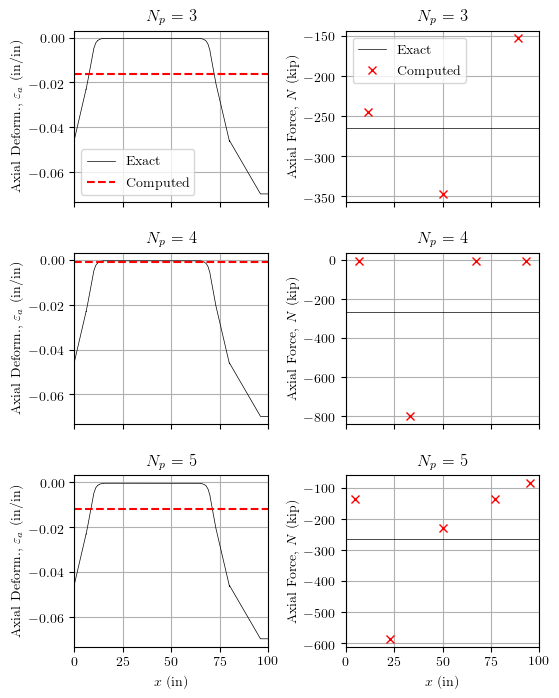OpenSees Cloud
OpenSees AMI
More Is Not Always Better
Original Post - 21 Apr 2020 - Michael H. Scott
Show your support at Buy Me a Coffee.
I sometimes run across simulations where frame member response is computed using displacement-based beam-column elements with more than two Gauss points per element. Displacement-based frame elements require at least two Gauss points to capture the exact solution for a linear-elastic, prismatic member.
While it is well known that you can improve simulated frame response by increasing the number of integration points in a force-based beam-column element, does the same hold true when using more than two integration points in a displacement-based element? Let’s find out using a model of a W14x90 steel member that appeared in a previous post comparing the displacement-based and force-based formulations.

The member resists a constant axial load, N=0.2FyA, and a moment, M, that increases from zero to two times the yield moment, My=FyS. The section area, A, and strong axis section modulus, S, for a W14x90 are found in the Steel Manual.
Interaction of the axial force and bending moment along the member is captured by fiber-discretized cross-sections. The stress-strain response of each fiber is bilinear with Fy=50 ksi, E=29,000 ksi, and \(\alpha\)=0.005.
We will examine the global and local response obtained from one displacement-based beam-column element (dispBeamColumn in OpenSees) with Np=3, 4, and 5 Gauss-Legendre integration
points. The analysis does not include geometric nonlinearity within the element.
The moment-rotation and moment-axial displacement response are shown below. Increasing the number of integration points does not improve the computed solution. Although there are some differences in the post-yield response, neither for better nor worse, the simulation consistently over-estimates the yield point.

The local flexural response at the final load step is shown below. As expected for the displacement-based formulation, the curvature distribution remains linear across the element and there is no significant change in the distribution as the number of integration points increases. The bending moments computed at each integration point do not converge to the exact solution–they merely scurry around to satisfy weak equilibrium.

Similar trends are observed for the local axial response. The axial deformation is constant along the element, as expected, but shifts a bit as the number of integration points increases. Thanks to weak equilibrium, the axial force at each integration point is pretty far from the expected solution; however, the weighted sum over all points is equal to the expected result of 265 kip compression in all cases.

So, my assessment is that increasing the number of integration points in a displacement-based element isn’t going to help you. It won’t really hurt you either; however, the amount of computational time spent on section state determinations can start to add up, especially for fiber sections, and cost you valuable wall time for no added benefit.
Two integration points per displacement-based element is all you need–you’re going to have to refine the mesh anyway.